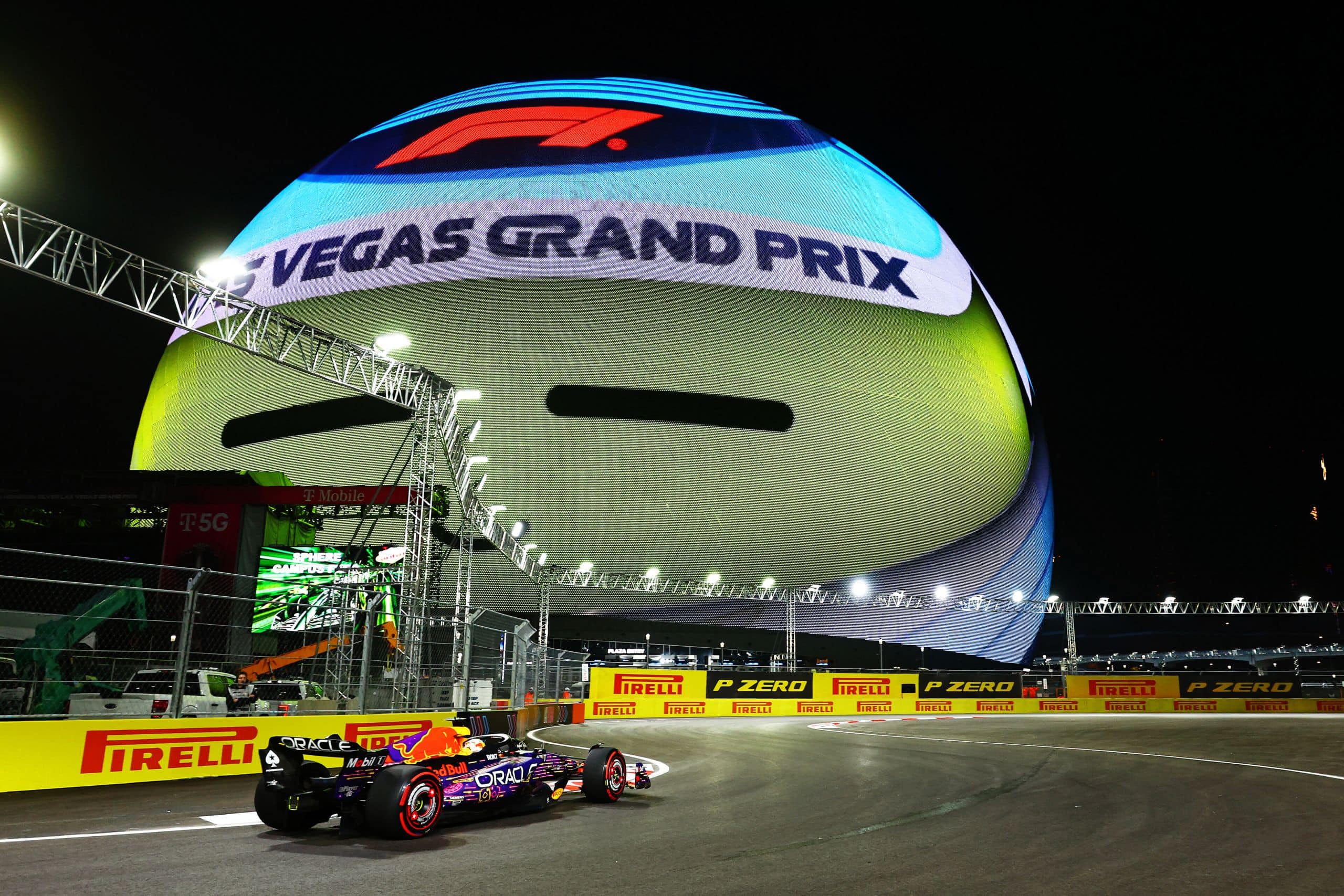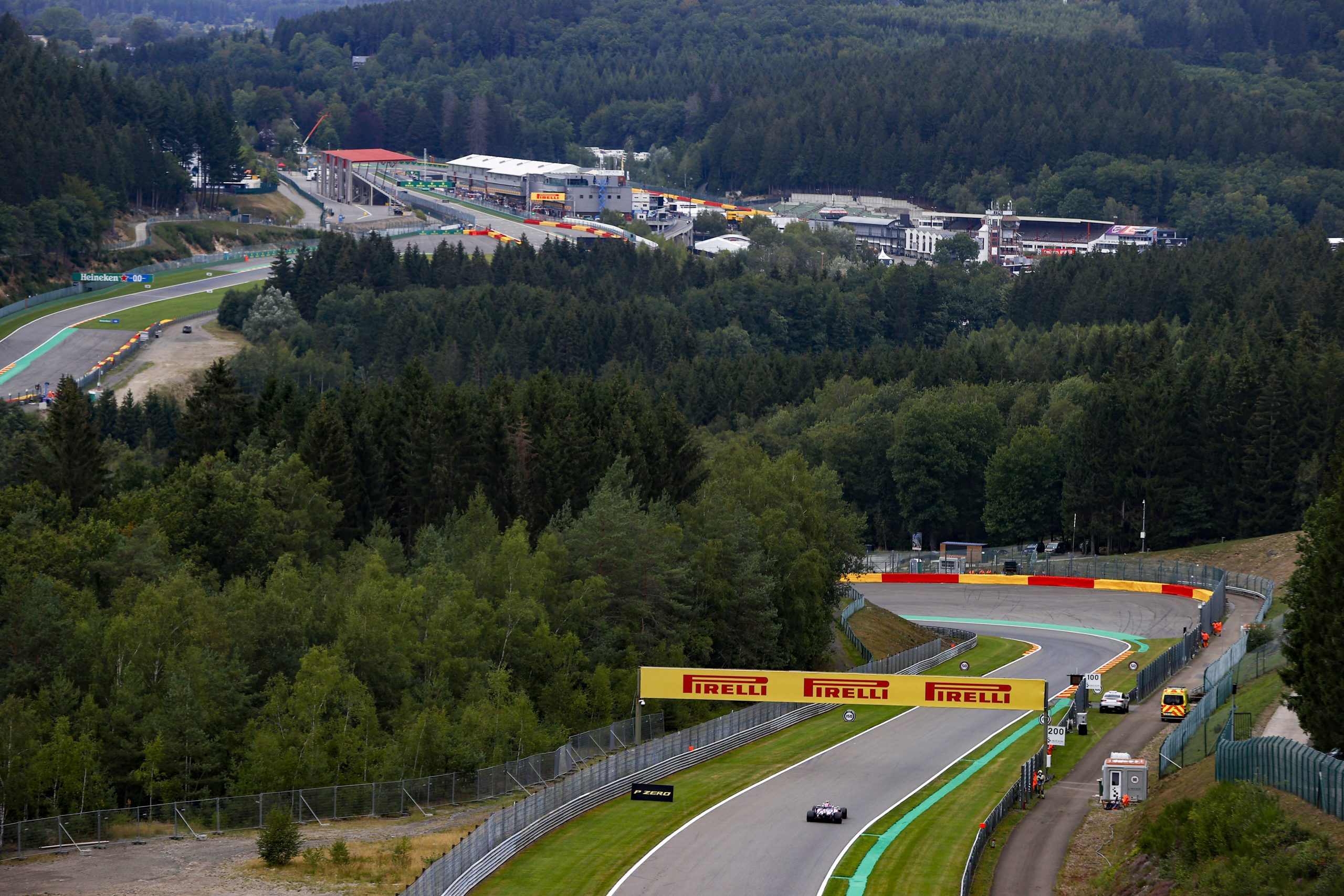Las Vegas Strip Circuit
The Las Vegas Strip Circuit marks a thrilling addition to the Formula 1 calendar, bringing the pinnacle of motorsport to the heart of the most vibrant entertainment corridor in the world—Las Vegas. This street circuit, characterized by its proximity to famous landmarks, hotels, and casinos, offers a unique night racing experience that pushes the boundaries of high-speed competition. The first Grand Prix in this location was hosted in November 2023, setting a precedent for a high-octane racing spectacle amidst the city’s luminous backdrop.
Designed to challenge the skills of Formula 1 drivers, the Las Vegas Strip Circuit weaves its way through the bustling cityscape with a track length of approximately 6.201 kilometers. The race distance totals approximately 309.958 kilometers, with the inaugural lap record set by Oscar Piastri in 2023. As the drivers navigate this temporary street circuit, they do so amidst the shimmering neon glow of the Las Vegas Strip, literally racing down one of the most iconic streets in the world.
A ten-year agreement has been secured, ensuring the Las Vegas Grand Prix will become a recurring event, bringing together the thrill of Formula 1 racing and the unmatched excitement of Las Vegas. With plans to host the next race in November 2024, the Grand Prix is becoming an integral part of the city’s event lineup, incorporating high-speed action with the spectacle of the setting, and thus contributing to Las Vegas’s reputation as a premier global destination for major sporting events.
History and Background
The Las Vegas Strip Circuit represents a historic milestone in Formula One racing, as it reintroduces the sport to the city of Las Vegas after more than three decades. It underscores a long-term commitment between Formula One and the city, encapsulating both the novelty of the circuit and the storied past of Grand Prix racing in Las Vegas.
Evolution of the Las Vegas Grand Prix
The Las Vegas Grand Prix has a distinct place in the annals of Formula One history, with its roots stretching back to the Caesars Palace Grand Prix in 1982. After a lengthy hiatus, the race made a celebrated return with the inaugural event on the Las Vegas Strip in 2023. This night race took place on a newly constructed street circuit, enveloping parts of the iconic Las Vegas Strip, and marked the first Formula One event in the city since the 1982 race.
Set against the backdrop of glittering casinos and landmarks, the Las Vegas Grand Prix written into the record books on November 18th, 2023, also achieved a notable feat by being the third Formula One Grand Prix hosted in the United States in the 2023 season. This occurrence hadn’t happened since that same year of 1982, showcasing Formula One’s growing footprint in the country.
Piloted by Carsten Tilke, the futuristic track winding through Paradise, Nevada, was meticulously designed to complement the city’s vibrant energy. With this, Formula One not only invested in a high-octane night race but also in the infrastructure, purchasing land for permanent pit and paddock facilities to bolster the annual event. Promising a decade of racing action, the 6.201-km circuit unfolded over 50 laps and delivered a total race length of nearly 310 km.
The only victor of the race thus far, Max Verstappen representing Red Bull Racing, wrote history by concluding the inaugural Las Vegas Grand Prix as its maiden winner, while Oscar Piastri recorded the fastest lap. From inception to realization, the Las Vegas Strip Circuit articulates a fresh chapter for Formula One in the United States with ambitions set for a longstanding future in Nevada.
Circuit Design and Specifications
The Las Vegas Strip Circuit, a contemporary addition to the Formula 1 calendar, is noteworthy for its high-speed sections and a diverse range of corners. Its design, which melds speed with precision, offers drivers a complex yet thrilling racing experience.
Track Layout and Features
The circuit boasts a 3.8-mile (6.2 km) track that weaves through the iconic Las Vegas Strip, housing 17 corners that test the skill of F1 drivers. Distinctive features include a mixture of high-speed sections, challenging chicanes, and a tight hairpin that demands technical prowess. Renowned circuit architect Hermann Tilke had a hand in designing this stimulating venue, ensuring a blend of spectacle and racing integrity.
- High-Speed Sectors: Utilize long straights allowing cars to reach impressive top speeds.
- Technical Sections: A series of corners requiring precise steering and car control.
Circuit Technicalities
With a track that promises to offer high-octane racing, the Las Vegas Strip Circuit’s technicalities are carefully calibrated.
- Corners: A total of 17 corners challenge drivers, demanding a spectrum of driving techniques.
- DRS Zones: Two DRS (Drag Reduction System) zones aid in overtaking, adding a strategic element to races.
By integrating speed with a complex layout, the track delivers an intense racing contest that caters to both the expectations of high performance and the unpredictable nature of street circuits.

Fan Experience
Attending the Las Vegas Strip Circuit offers race fans a unique and immersive motorsport spectacle, surrounded by the vibrancy of world-renowned hotels and attractions. Viewers can anticipate state-of-the-art viewing areas and a plethora of entertainment options during the event.
Viewing Areas and Facilities
General Admission: Attendees with general admission tickets can expect ample space along the circuit, with clear views of the high-speed action. Giant screens are strategically positioned to ensure that spectators don’t miss a moment of the race.
Paddock Club: For an exclusive experience, the Paddock Club provides guests with a luxurious view overlooking the pit lane. Patrons enjoy gourmet dining and open bars along with pit lane walks.
| Location | Features |
|---|---|
| Sphere | Innovative technology, expansive views |
| Bellagio | Prime views of the Bellagio Fountain |
| Venetian | Elevated luxury experience |
Entertainment and Activities
Adjacent to the racing excitement, fans will find a roster of entertainment to enhance their experience.
Sphere: The Sphere is touted for its next-generation entertainment technology, expected to host various performances and showcases in conjunction with the F1 event.
Local Landmarks: Racing fans can also enjoy the nearby iconic sights, such as the Bellagio Fountains and the Eiffel Tower replica at Paris Las Vegas.
Entertainment: Throughout the grand prix weekend, numerous concerts and parties are planned, with opportunities to engage with the sport and its stars at fan zones like the T-Mobile Zone at Sphere.
In brief intervals when cars are not storming the track, attendees can take in the architectural marvels that line the Strip. From the gondola rides of the Venetian to the dancing fountains of Bellagio, there is no shortage of attractions to keep fans entertained.
Economic and Cultural Impact
The Las Vegas Strip Circuit has brought considerable economic benefits to the city and elevated its status in the world of sports and entertainment.
Local and Global Influence
The Las Vegas Strip Circuit has significantly impacted both the local economy and the city’s global presence. The event attracted a capacity crowd of 315,000 fans, showcasing Las Vegas Boulevard as not only a gaming hub but also a premier motorsports destination. The presence of the circuit on The Strip has boosted the profiles of surrounding casinos and hotels, which experienced a substantial increase in average daily rates during the event period. The grand prix’s estimated $1.2 billion economic impact reflects direct spending in the city and underscores Las Vegas’s ability to host world-class events that draw global attention.
Impact on Motorsports Culture
The introduction of the Las Vegas Strip Circuit has also made a notable mark on the culture of motorsports. By situating the track alongside renowned entertainment venues, it has merged the excitement of high-speed racing with the glamour and allure of Las Vegas. This fusion has not only enhanced the spectator experience but has also cemented the city’s reputation as a fulcrum for sports and entertainment alike. The circuit’s promotion and reception have amplified interest in motorsports, attracting both seasoned fans and newcomers to the sport.
Logistics and Operations
Handling logistics and operations for an event as colossal as the Las Vegas Strip Circuit Formula 1 race involves immense precision and tactical planning. This includes organizing the race and coordinating the myriad details of infrastructure and construction within a densely populated urban environment.
Race Organization
The organizational aspect of hosting a Formula 1 race goes beyond the track—it encompasses the entire orchestration of equipment and personnel transport. It begins with the meticulous eight-hour breakdown of the event’s previous location, allowing for crucial elements such as team vehicles, safety equipment, and team gear to be transported, sometimes over the course of weeks, to the new venue. Efficiently navigating through custom requirements and logistical challenges, such as air transport‘s expedited yet costly services versus slower but more affordable sea and land transit, is critical. Teams typically move an average of 50 tons of equipment each per race, with total season costs reaching about $8 million to shuttle materials globally.
Infrastructure and Construction
For the Las Vegas Strip Circuit, construction efforts were significant, with an investment of approximately $560 million. This facilitated the repaving of roadways and the building of permanent pit and paddock facilities. The circuit itself, designed with a straight where speeds might top 215 MPH, has a track length of 1.18 miles, and includes strategically placed grandstands and temporary bridges for spectator access. Key points of interest such as Koval Lane and Sands Avenue were considered to minimize disruption during the construction phase. Direction of traffic along the Las Vegas Strip was carefully modulated to accommodate both the racing event and the ongoing tourist activity. The construction process also highlighted how urban environments can be adapted for world-class racing events, maintaining safety standards and conforming to FIA regulations, while adding a distinctive Vegas flavor to the sport’s high-stakes atmosphere.
Las Vegas Strip Circuit – Frequently Asked Questions
This section addresses some of the most common queries regarding the Las Vegas Strip Circuit, offering clear and concise information for enthusiasts and first-time visitors.
Is the Las Vegas F1 track a street circuit?
Yes, the Las Vegas Strip Circuit is a street circuit. This means the track is laid out on the city streets of Las Vegas, specifically incorporating sections of the famous Las Vegas Boulevard.
Is the F1 track in Las Vegas permanent?
No, the Las Vegas Strip Circuit is not a permanent track; it is a temporary street circuit set up specifically for the Las Vegas Grand Prix event.
Is Las Vegas Grand Prix on the Strip?
Indeed, a portion of the Las Vegas Grand Prix runs along the Las Vegas Strip. The race takes place at night and features a spectacular backdrop of the city’s illuminated landmarks.
Is F1 Las Vegas a day or night race?
The Las Vegas Grand Prix is held at night, which allows spectators to enjoy the race with the vibrant neon lights of the city as a backdrop.
Where can I buy tickets to the Las Vegas Grand Prix?
Tickets to the Las Vegas Grand Prix can be purchased through the event’s official website or authorized ticket vendors. It’s advisable to secure tickets in advance due to high demand.

